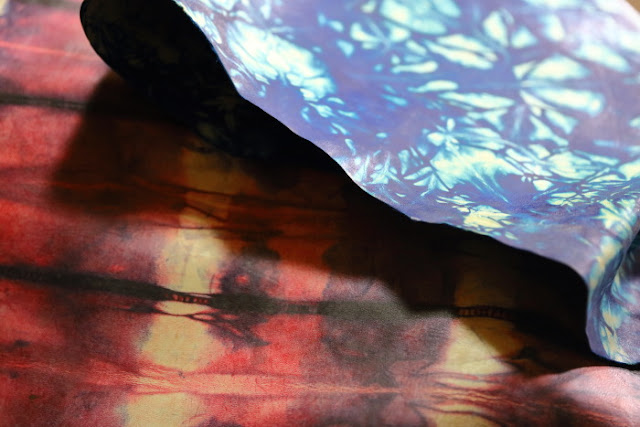 |
| Obi is introducing his leather sewing babies |
The leather workshop occupies the ground floor of the house. Obi is assisted by his three sons, who all sport a thick black beard like their father. Each one is playing a different role in the business (marketing, production, creation etc...). Obi humbly confessed not being the perfect sales person " in a shop, I would talk too much to potential customers and forget about selling my wares, therefore it is best if someone else does it". A fair self-assessment of Obi's love for talking. A large part of his sales are happening online on his Obi leather website.
 |
| the refurbished leather cutting machine |
The workshop is somewhat dark despite the openings and the narrow vertical windows. It is equipped with lamps next to each of the machines spread across the room. Right by the entrance is a large leather cutter machine, an Atom CP 22. It is a sort of vacuum pump that creates a pressure of about three tons when it sandwiches the metal shape put on the leather. Obi says they recuperated the machine and transformed it. We look at an array of specialised sewing machines. One of them, has been customised for large leather pieces. The arm containing the rotating axe has been extended like for a leg elongation surgery: cut in middle, add a middle piece and put back the whole together.
What perspires from the visit is the ingenious creativity of Obi, he is an excellent craftsman.
Tell him about what you have in mind and he will make it happen. Taylor-made orders are certainly his favourites as it challenges his imagination and his skills.
 |
| Obi and sons: showing an apron with suspenders |
Obi purchases his leather at the Mushin market.
He showed us some batik prints on skin that used to be produced in Northern Nigeria near Kano as per the batik process on cloth. Fortunately, he is able to import some from Ethiopia where that savoir-faire is still alive.
Experimentation is at the heart of Obi's work. For instance he is using some lipstick to colour the edge of the leather pieces to produce bi-color pieces.
 |
| batik prints on leather |
Comments
Post a Comment